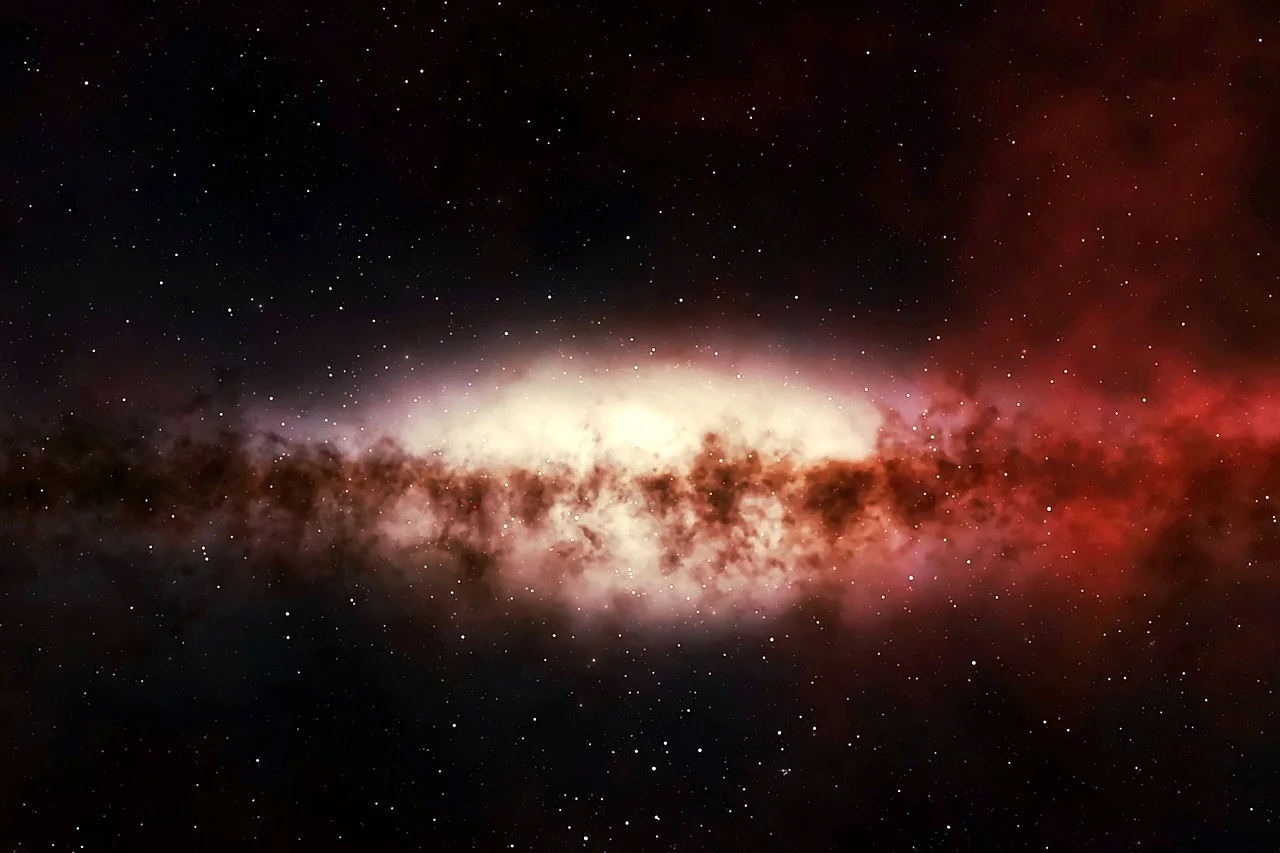
For quite a while, scientists have been unable to directly confirm the existence of dark matter, a mysterious substance thought to permeate the cosmos. However, a new study by researchers at Tsinghua University, the Purple Mountain Observatory and Peking University suggests progress may be on the horizon.
In the journal Physical Review Letters, the authors present a new method for directly detecting dark matter using radio telescopes, focusing on investigating dark photons as a prime candidate for dark matter.
In dark matter, the still hypothetical dark photons are analogous to their luminous counterparts in that they also carry a force. Just like photons carry electromagnetism in common matter, dark photons are thought to play a crucial role in the cosmos.
The research team developed a scheme based on their prior theoretical work converting dark photons into photons in the solar corona. The astronomers propose using radio telescopes, like the giant 500-meter aperture spherical radio telescope (FAST), to detect the electromagnetic signals induced by the dished telescopes through free electrons.
However, a major obstacle arose. Existing radio telescope dish reflectors are parabolic in shape, with the receiver located at the focal point. But because dark matter is not relativistic, the dish reflector needs to round with the receiver in the middle, which presented some difficulties.
Fortunately, luck played a role. Researcher Haipeng An discovered at the FAST site that the telescope could observe radio waves from different directions because the receiver was suspended above the dish and could be moved. A novel idea sprang from this.
Researchers hypothesized that, even though dark photon-induced electromagnetic waves wouldn’t concentrate at the receiver, the electromagnetic field might form a distribution on top of the dish that could be precisely calculated.
According to the group’s theoretical predictions, radio telescopes with a movable receiver can pick up electromagnetic signals from various locations. Radio telescopes’ sensitivity to dark photon-induced signals could be improved by comparing the collected signals with the distributions predicted by theory.
The researchers discovered that the FAST telescope’s sensitivity had already surpassed the constraint imposed by the cosmic microwave background, suggesting that it had the potential to detect dark matter if it consisted of dark photons within a specific mass range.
An and his colleagues analyzed observation data obtained from the FAST radio telescope in Guizhou, China, to verify the efficacy of their proposed method. They used this analysis to set tight limits on the model for frequencies between 1 and 1.5 GHz.
The researchers found dark photon dark matter could potentially produce electric signals on dipole antennas and that interferometry technology could further enhance this sensitivity. According to their calculations, the researchers also determined the sensitivity of the Low Frequency Array (LOFAR) and future SKA telescopes, which showed promise in detecting dark photon dark matter.
Thanks to the group’s work, astronomers may one day be able to use radio telescopes to directly detect dark photons. These results provide new avenues for research into dark matter, most notably the hunt for ultra-light dark photons.
Motivated by their success, An and his team are preparing to look for evidence of dark photon dark matter in data from the LOFAR and MeerKAT telescopes. Axion dark matter is another candidate for ultra-light dark matter, and they hope to use their novel approach to find it.


